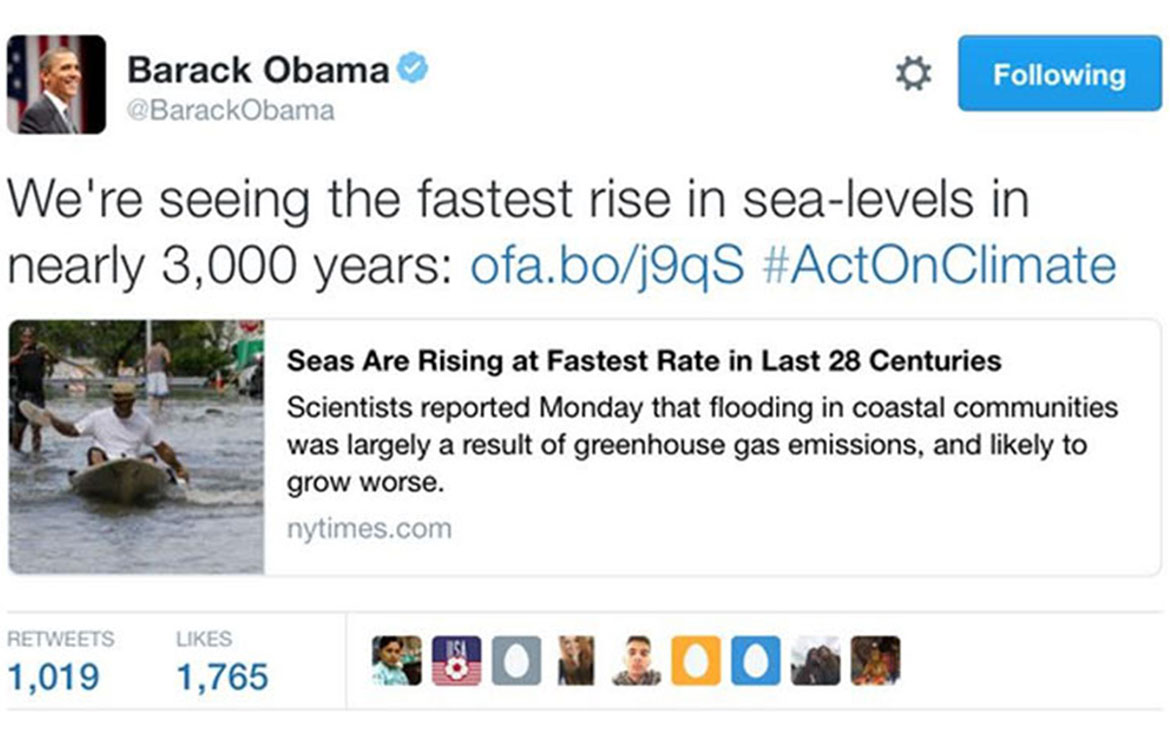Last week, President Barack Obama tweeted a link referring to a study done by Rutgers’ Ben Horton and Bob Kopp on the rate at which the sea levels are rising.
Sea-level rise projected for the coming decades presents a hazard to intense concentrations of population, economic production, and static infrastructure along North American coasts. Modern sea-level rise lacks a fundamental paleo-perspective of the type already available for temperature changes. Common Era (last 2000 years) sea-level reconstructions capture multiple phases of climate and sea-level behavior for model calibration, provide a pre-anthropogenic background against which to compare recent trends, and characterize patterns of natural variability.
The Atlantic coast of North America provides a sedimentary record of Common Era sea levels with the resolution to identify the mechanisms that cause spatial variability in sea-level rise. We reveal three distinct patters in sea-level during the Common Era along the North American Atlantic coast, likely linked to wind-driven changes in the Gulf Stream: (1) Florida, sea level is essentially flat, with the record dominated by long-term geological processes; (2) North Carolina, sea level falls to a minimum near the beginning of the second millennium, climbing to an early Little Ice Age maximum in the fifteenth century, and then declining through most of the nineteenth century; and (3) New Jersey, a sea-level maximum around 900 CE, a sea-level minimum around 1500 CE, and a long-term sea-level rise through the second half of the second millennium.
We combine the salt-marsh data from North American Atlantic coast with tide-gauge records and other high resolution proxies from the northern and southern hemispheres to estimate global sea level. We find that global sea level varied by 8 cm over the pre-Industrial Common Era, with a notable decline over 1000–1400 CE that coincides with ∼0.2 °C of global cooling. The 20th century global sea-level rise was extremely likely faster than during any of the 27 previous centuries.

